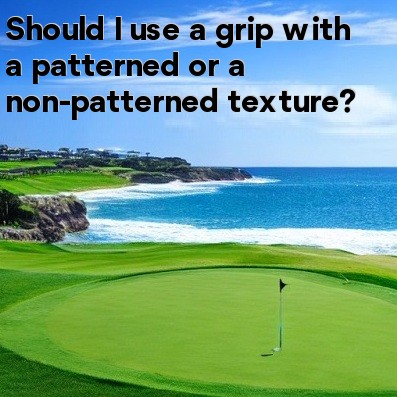
Should I use a grip with a patterned or a non-patterned texture in golf?
When it comes to selecting a golf grip, the texture is an important factor to consider. The grip is the only point of contact between the golfer and the club, so it plays a significant role in determining how well you control the club throughout your swing. Among the various texture options available, two common choices are patterned and non-patterned grips. Let's take a closer look at each option to help you decide which grip texture is best for you.
- Patterned Texture:
Grips with a patterned texture have designs or textures on the surface that provide additional traction. These patterns can be anything from simple lines or grooves to more intricate designs. The purpose of these patterns is to enhance the golfer's grip on the club, especially in adverse weather conditions such as rain or high humidity.
One significant advantage of patterned grips is the increased control they offer. With the additional traction, golfers can maintain a firmer grip on the club, reducing the likelihood of the club slipping during the swing. This can lead to improved swing stability and consistency, resulting in better ball-striking.
Another benefit of patterned grips is their ability to promote proper hand placement. The patterns act as visual aids, allowing golfers to easily identify whether their hands are in the correct position on the grip. This can be particularly helpful for beginners or golfers who struggle with grip alignment.
- Non-patterned Texture:
On the other hand, non-patterned grips have a smooth texture without any added patterns or designs. These grips are generally made from a softer material, providing a comfortable feel in the hands. Many golfers find non-patterned grips more aesthetically pleasing and enjoy the simplicity of their design.
While non-patterned grips may lack the enhanced traction of patterned grips, they still offer several advantages. The smooth texture allows for a more natural and relaxed grip, which can promote better feel and touch. Golfers who prefer a lighter grip pressure or those with delicate hand sensitivity often gravitate towards non-patterned grips.
Furthermore, some golfers believe that non-patterned grips allow for more hand and wrist action during the swing. This increased mobility can be beneficial for golfers who generate power through wrist hinge or have a more unconventional swing style.
Ultimately, the choice between patterned and non-patterned grips largely depends on personal preference. If you frequently play in wet or humid conditions or struggle with maintaining a consistent grip, patterned grips may be the better option for you. On the other hand, if comfort, feel, and a minimalist design are important to you, non-patterned grips may be the way to go.
It's worth noting that grip texture is just one aspect to consider when selecting a golf grip. Grip size, material, and shape are also important factors to evaluate. To make an informed decision, try out different grip options and see which one feels the most comfortable and secure in your hands. Your local golf professional or club fitting expert can provide valuable advice and assistance in finding the perfect grip for your game.





